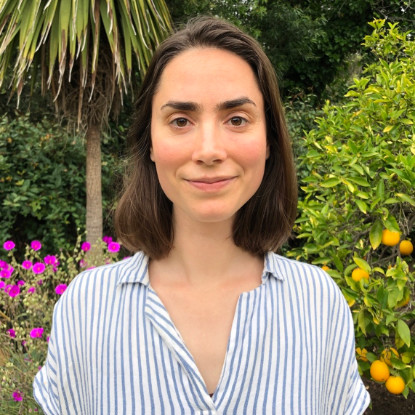The confluence of chemistry, biology, and the outdoors drew me to the study of environmental chemistry applied to watershed systems. During my doctoral research at the University of Wisconsin – Madison, I examined the geochemical mobilization of radium in the midwestern Cambrian-Ordovician aquifer system. In the Upper Midwest in the US, radium is a contaminant that many communities sourcing drinking water from groundwater must mitigate. Better understanding of how aquifer geochemistry mobilizes radium provides communities with more information about radium occurrence in the aquifer system. Since then, I have focused on developing and using new techniques such as high frequency data collection and isotopic analysis to investigate hydrologic and geochemical interactions in watershed systems.
In the classroom, I am passionate about building a supportive learning community and working with students to develop critical thinking skills. I love introducing students to the fundamentals of chemistry and thinking about how they apply to everyday components of the world - like streams, aquifers, and so much more.
Wiersma, A. K., Hook, G., Mathews, M., Scott, S. R., Meyer, J. R., Parker, B. L., & Ginder-Vogel, M. Elevated Radium Activity in a Hydrocarbon-Contaminated Aquifer. Environmental Science & Technology 2023.
Mathews, M.; Scott, S. R.; Gotkowitz, M. B.; Hunt, R. J.; Ginder-Vogel, M. Isotopic analysis of radium geochemistry at discrete intervals in the Midwestern Cambrian-Ordovician aquifer system. Applied Geochemistry 2022.
Mathews, M.; Scott, S. R.; Hunt, R. J.; Ginder-Vogel, M. Comparison of radium analytical methods for municipal drinking water well operation. AWWA Water Science 2022.
Mathews, M.; Scott, S. R.; Gotkowitz, M. B.; Ginder-Vogel, M., Association of radionuclide isotopes with aquifer solids in the Midwestern Cambrian-Ordovician aquifer system. ACS Earth and Space Chemistry 2021.
Dematatis, M.; Plechacek, A.; Mathews, M.; Wright, D. B.; Udenby, F.; Gotkowitz, M. B.; Ginder-Vogel, M., Spatial and temporal variability of radium in the Wisconsin Cambrian-Ordovician aquifer system. AWWA Water Science 2020.
Mathews, M.; Gotkowitz, M.; Ginder-Vogel, M. Effect of geochemical conditions on radium mobility in discrete intervals within the Midwestern Cambrian-Ordovician aquifer system. Applied Geochemistry 2018.
Schumacher, W. T.; Mathews, M. J.; Larson, S. A.; Lemmon, C. E.; Campbell, K. A.; Crabb, B. T.; Chicoine, B. J.-A.; Beauvais, L. G.; Perry, M. C. Organocatalysis by site-isolated N-heterocyclic carbenes doped into the UIO-67 framework. Polyhedron 2016.
Research themes: Environmental Chemistry, Water Quality, Contaminant Mobility, Field Work, Analytical Chemistry
My lab group works on questions framed within the field of environmental aquatic geochemistry. We study chemical interactions in freshwater systems like groundwater, streams, and lakes. I am particularly interested in the complex interactions of inorganic constituents between aqueous systems and soils, sediments, and rock. This includes metal contaminants and nutrients, as well as naturally occurring metals which can provide more information about the functioning of the overall system.
At Gonzaga University, my group will couple lab experiments and analysis with field work to investigate the water chemistry of local watershed systems. We will examine the role of biology, anthropogenic inputs, and physical changes in controlling water quality. If you are interested in applying chemical analytical techniques to learn more about local watersheds, please reach out!

